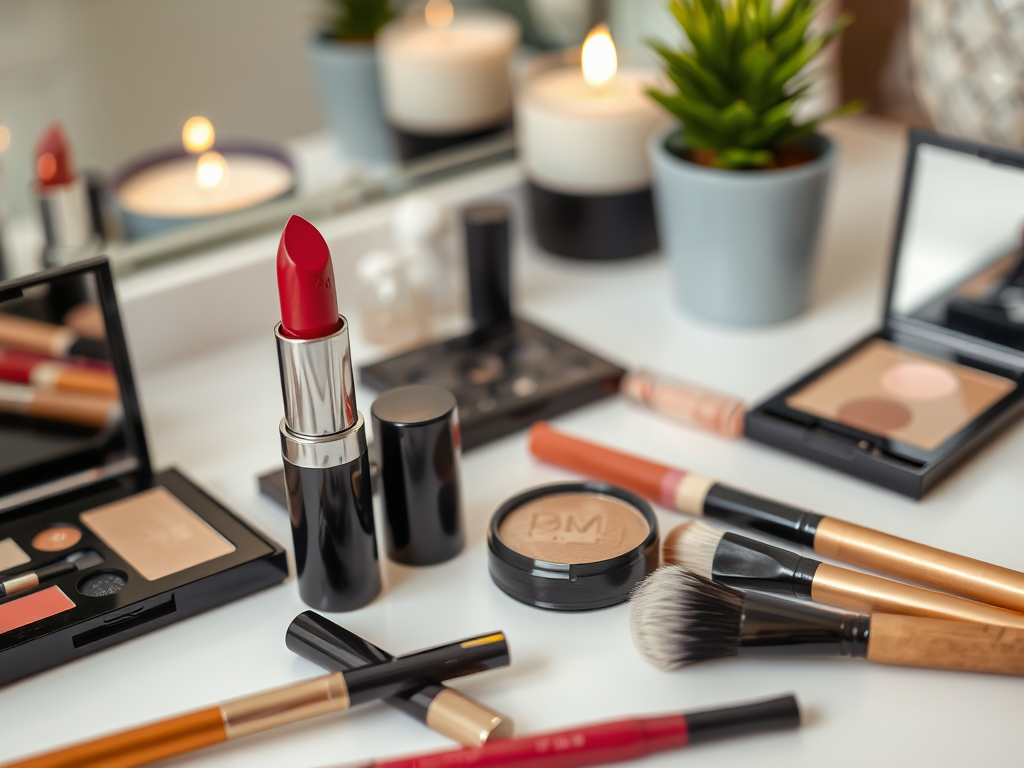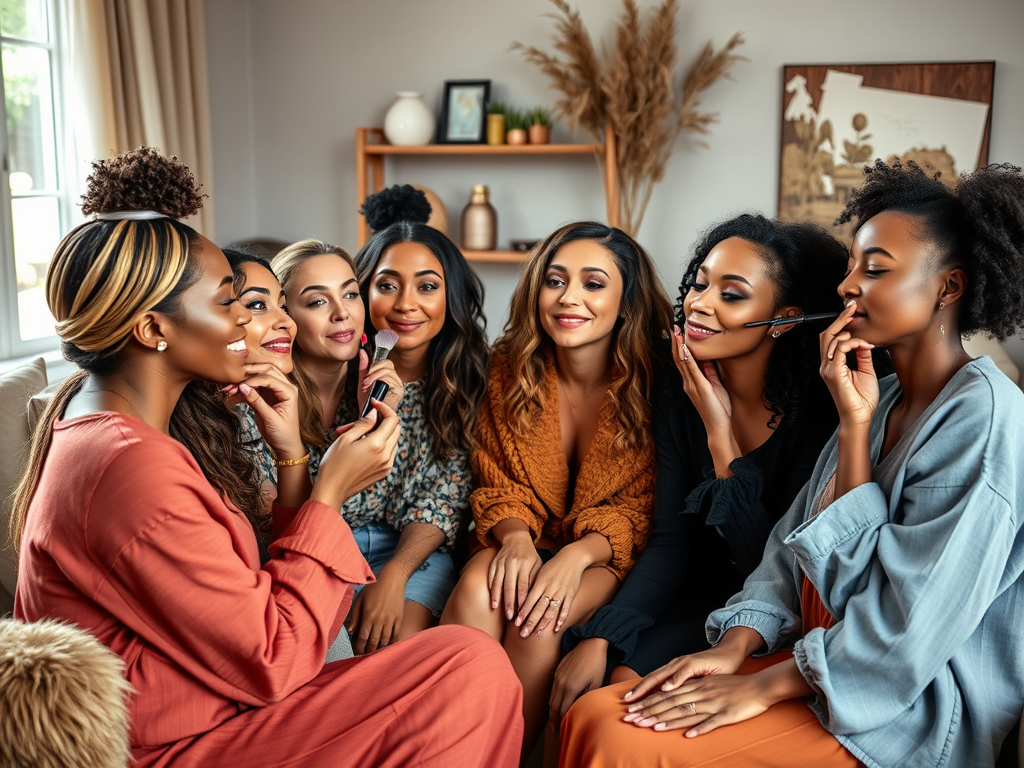Makeup has the remarkable ability to elevate not only your appearance but also your confidence. Understanding the right makeup steps can make a world of difference, especially for beginners who may feel overwhelmed by the plethora of products and techniques available. Each step in your makeup routine serves a specific purpose, contributing to an overall polished look. By following a structured sequence, you can easily achieve that professional finish that many aspire to, even if you’re just starting your makeup journey. Armed with the right techniques and knowledge, you can transform your daily routine into an empowering ritual that enhances all of your best features. In this comprehensive guide, we will break down each step of the makeup process and equip you with the confidence to create your own stunning looks.
Prepping Your Skin

To achieve a flawless makeup application, it’s essential to prepare your skin appropriately. Prepping your skin not only enhances the overall look of the makeup but also ensures its longevity throughout the day. The foundation of a great makeup routine begins with a well-cared-for face. Skipping this step can lead to uneven application and makeup that doesn’t stay in place. Here, we’ll cover three crucial aspects of skin prep, ensuring you’re set to shine once your makeup is applied.
Cleansing
Starting with a clean slate is vital. A good cleanser removes dirt, oil, and other impurities that can hinder makeup application. For various skin types, you’ll want to choose products that cater to your specific needs:
- Oily skin: Look for gel-based cleansers.
- Dry skin: Opt for creamy or hydrating cleansers.
- Sensitive skin: Gentle, fragrance-free options are essential.
Moisturizing
A moisturizer is key in preventing your makeup from looking cakey or dry. It helps to hydrate the skin, creating a smooth surface, and can even help makeup adhere better. When selecting a moisturizer, consider your skin type as well. Here are some suggestions:
- For oily skin: Lightweight gel moisturizers
- For dry skin: Rich, cream-based moisturizers
- For combination skin: Balancing moisturizers with both hydrating and matte properties
Primer Application
Once your skin is clean and moisturized, applying a primer is the next step. Primers are designed to fill in fine lines and pores, creating that perfect canvas for your foundation. Primers come in various forms, such as mattifying or illuminating, so you’ll want to select one based on your desired finish. Here are some tips:
- Use a mattifying primer if you have oily skin.
- Choose an illuminating primer if you desire a dewy finish.
- Apply with your fingers, a sponge, or a brush for the best results.
Foundation

With your skin prepped, it’s time to apply foundation, which serves as the primary base for your look. Choosing the right foundation shade is critical; it should blend seamlessly into your skin tone. To pick the right foundation, consider factors like your skin type, undertones, and coverage level. The market offers various foundations, ranging from liquid to powder, ensuring there’s something for everyone. It’s recommended to test samples on your jawline rather than your wrist to find the perfect match. The aim is to create an even skin tone while still looking natural.
Once you’ve selected your foundation, the next step is applying it effectively. Different techniques can achieve different results, from sheer coverage to full-on glamour:
| Technique | Description |
|---|---|
| Brush | Ideal for even application and can be layered for coverage. |
| Sponge | Great for blending, providing a natural and smooth finish. |
| Fingers | Offers warmth, allowing for easy melting into the skin. |
Setting the Base
After achieving an even base with your foundation, setting it becomes essential for durability throughout the day. A makeup look can easily fall apart without proper setting. There are two primary methods to set base makeup: setting powder and setting spray. While both serve the same purpose—keeping your makeup in place—each has its unique application and finish. Here, we’ll delve into how to effectively set your makeup for a long-lasting wear.
Setting Powder vs. Setting Spray
Both setting powder and setting spray have their merits:
- Setting powder is great for mattifying and absorbing excess oil.
- Setting spray is ideal for hydration and creating a dewy finish.
- For best results, use both: powder to set and spray to finish.
Application Tips
Apply setting powder with a fluffy brush, focusing especially on areas prone to oiliness—like the T-zone. Meanwhile, spray can be lightly misted over your face once all other makeup is in place. This technique locks in all your hard work and ensures longevity. Adjust the amount based on your personal preferences and the look you are going for.
Eye Makeup
The eyes are often described as the windows to the soul, making eye makeup crucial in any routine. From defining your brows to applying shimmering eyeshadow, each application enhances the eyes beautifully. Let’s breakdown the steps involved in eye makeup and how to get the best results every time. Remember that practice is key in perfecting these techniques and looks.
Eyebrows
Well-defined eyebrows frame the face and can dramatically alter your overall look. Use a brow pencil or powder to fill in any sparse areas, and always align it with your natural brow shape to keep it looking natural.
Eyeshadow
Applying eyeshadow can be a fun and creative process. Start with a neutral base color over the entire lid, then layer deeper shades in the crease for dimension. Blend well for a seamless transition between colors, and feel free to experiment with different textures, such as mattes and shimmers.
Eyeliner
Eyeliners come in various forms—pencil, liquid, or gel—each offering unique application techniques. Pencil liners are great for beginners, while liquid liners can give you that bold cat-eye look. Start small and build the thickness as you gain confidence.
Mascara
Finish off your eye makeup with mascara, which enhances your lashes and frames your eyes perfectly. Choose volumizing formulas for fuller lashes or lengthening types for added drama. Wiggle the wand from the roots to the tips for maximum impact.
Cheeks
Bringing color to the cheeks can enhance your features and add a healthy glow. The right blush applied correctly can elevate your entire look. There are several types of blush to consider, including powder, cream, and liquid, each offering different finishes and application styles. Build the color slowly, starting with a light hand and adding more as necessary. Let’s explore more about applying blush, along with contouring and highlighting, to achieve that desired sculpted effect.
Blush Application
When choosing a blush shade, it’s essential to consider your skin tone. Fair skin looks stunning with soft pinks, while deeper skin tones can rock rich berry shades. Applying blush to the apples of your cheeks and blending it out toward your temples will create a natural flush.
Contouring and Highlighting
Contouring creates shadows that define your face, while highlighting draws attention to your best features. A good rule of thumb is to apply contour product to areas where natural shadows occur—such as under the cheekbones, along the jawline, and on the sides of your nose. Highlighter should be applied on the high points like the tops of your cheekbones, brow bones, and down the bridge of your nose for an illuminated finish. Tread carefully, as the aim is subtle enhancement rather than harsh lines.
Lips
Finally, we reach the lips, the finishing touch to your makeup look. The perfect lip color can tie your entire look together, pulling all the elements into harmony. Selecting the right shade and product type is essential for complementing your overall aesthetic. Let’s dive into lip liner and lipstick options to complete your gorgeous transformation effortlessly.
Lip Liner
Lip liner is an often-overlooked step that can make a significant difference in your lip application. It not only helps define the edges but also prevents feathering. Choose a shade close to your natural lip color or the lipstick you plan to wear to create a seamless look.
Lipstick
Understanding the diverse range of lipstick types available will enhance your experience. From matte and satin to gloss and cream, each type can evoke a different mood. Opt for shades that complement your overall makeup. Neutral tones work wonders for day looks, while bold reds or deep berries can add drama for the evening.
Conclusion
In summary, mastering makeup steps in order is an empowering journey for beginners. By understanding each step—from skin prep to the final touch on your lips—you have the foundational knowledge to create stunning looks. It’s all about practice and finding the products that work best for you. As you continue to experiment, you’ll discover techniques that suit your unique style. Remember, makeup is an art, so don’t hesitate to express yourself as you perfect your skills over time!
Frequently Asked Questions
- What should I start with if I’m new to makeup?
Begin with essential products like foundation, mascara, and a neutral lipstick. Practice basic application techniques before exploring more complex looks. - How do I know my skin type for better makeup choices?
Determine if your skin is oily, dry, combination, or sensitive to select products suited for your skin needs. - Is it necessary to use a primer?
While not mandatory, using a primer can significantly improve the longevity and finish of your makeup. - How can I make my makeup last longer?
Use a setting spray, avoid touching your face, and consider using long-wear formulas for foundation and other products. - Can I skip any steps in the makeup process?
Yes, the makeup process can be customized based on your personal preferences and the look you aim to achieve.